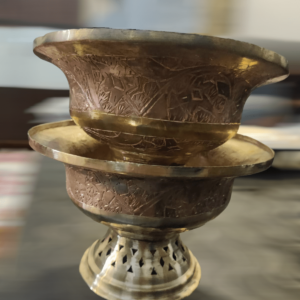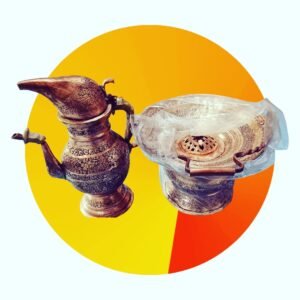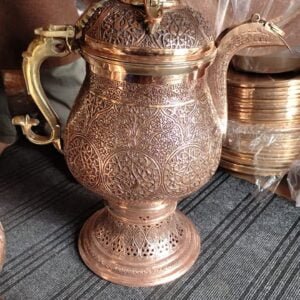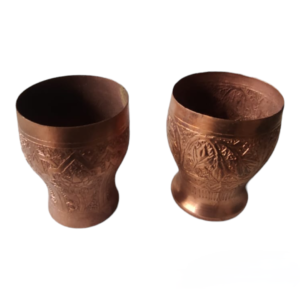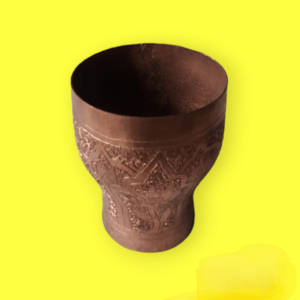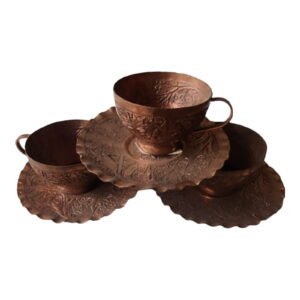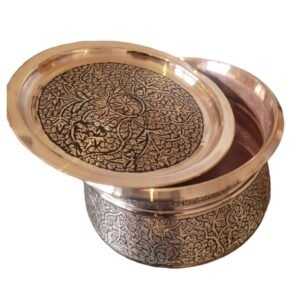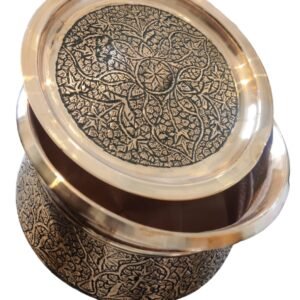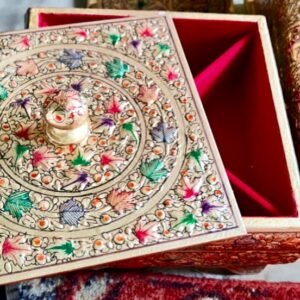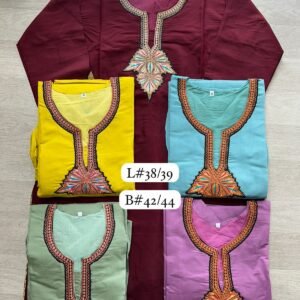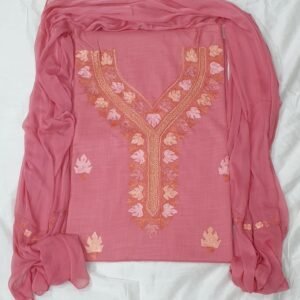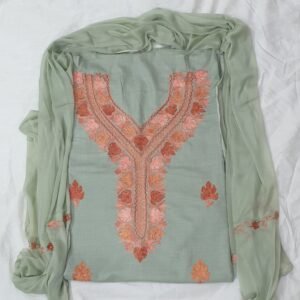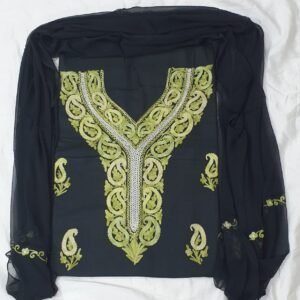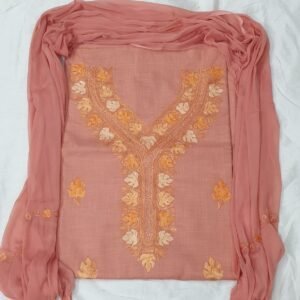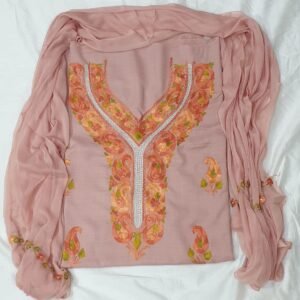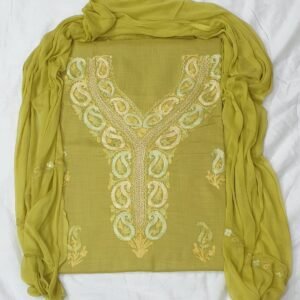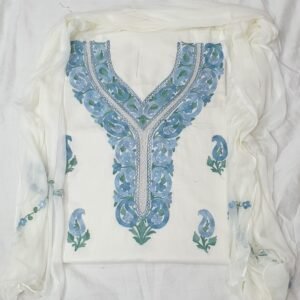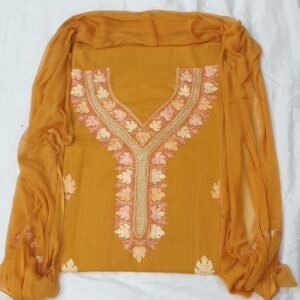The Timeless Artistry of Kashmiri Copperware: A Journey Through “Traam”
Kashmir, often referred to as the ‘Paradise on Earth’, is not just famous for its breathtaking landscapes and rich cultural heritage but also for its exquisite craftsmanship. Among the various arts and crafts that have flourished in this region, Kashmiri copperware, locally known as “Traam” in Kashmiri, holds a special place. This ancient artwork has been passed down through generations, reflecting the region’s rich cultural heritage and artistic prowess.
History and Significance
The art of crafting copperware in Kashmir dates back centuries. The intricate floral, stylized, geometric, leaf, and calligraphic motifs that are engraved or embossed on copper or brass objects tell a story of Kashmir’s artistic excellence. From cooking pots and samovars to decorative items, these articles are a testament to the skilled craftsmanship of Kashmiri artisans.
The Process of Creation: From Raw Copper to Masterpiece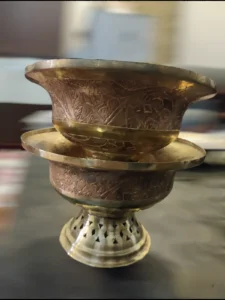
The process of creating Kashmiri copperware is a collaborative effort involving skilled artisans, each specializing in a particular technique:
- Khar (The Smith): Responsible for shaping the raw copper into various forms using traditional tools and techniques such as hammering and molding.
- Naqash (The Engraver): Intricately engraves designs and patterns onto the copper surface using specialized tools, featuring traditional Kashmiri motifs, floral patterns, or calligraphy.
- Zarcod (The Gilder): Applies gold or silver leaf onto the engraved copper surface, adding a luxurious and decorative element.
- Roshangar (The Polisher): Polishes the copperware to a smooth and shiny finish, enhancing its luster and beauty.
- Charakgar (The Cleaner or Finisher): Responsible for cleaning and finishing the final product, ensuring it is free from imperfections.
Specific localities or Mohallas in Kashmir, such as Roshangar-Mohalla, are named after these professions, highlighting the deep-rooted connection between the artisans and their craft.
Variety and Utility
Kashmiri copperware encompasses a wide range of household and decorative products, including utensils such as Lota (pot), Tream (plate), Naer (water jug), Tash-Near (portable handwash), dishes, bowls, trays, vessels, haandi, lamp shades, and more. Among these, the most celebrated item is the “Samovar,” a traditional tea container or large kettle used for brewing and serving tea.
The Legacy Continues
The craftsmanship of Kashmiri copperware is renowned worldwide for its exquisite engraving and intricate designs. Each piece is a testament to the skill, dedication, and artistic flair of the artisans who continue to uphold this ancient tradition. Through their craftsmanship, they preserve the rich cultural heritage of Kashmir and showcase it to the world.
In conclusion, Kashmiri copperware or “Traam” is not just an artwork but a symbol of Kashmiri culture, tradition, and identity. It serves as a bridge between the past and the present, connecting generations of artisans who have dedicated their lives to mastering this timeless craft. As we appreciate the beauty and intricacy of each piece, let us also remember the artisans behind them, whose hands have brought these masterpieces to life.
So, the next time you come across a piece of Kashmiri copperware, take a moment to admire the artistry and skill that went into creating it. It’s not just a piece of metal; it’s a piece of Kashmir’s soul, a testament to its rich cultural heritage and artistic legacy.
-
₹1,500.00 – ₹28,500.00 Select options This product has multiple variants. The options may be chosen on the product page
BUY HERe: https://kashmirwholesalebazar.com/product-category/art-crafts/copperware/



